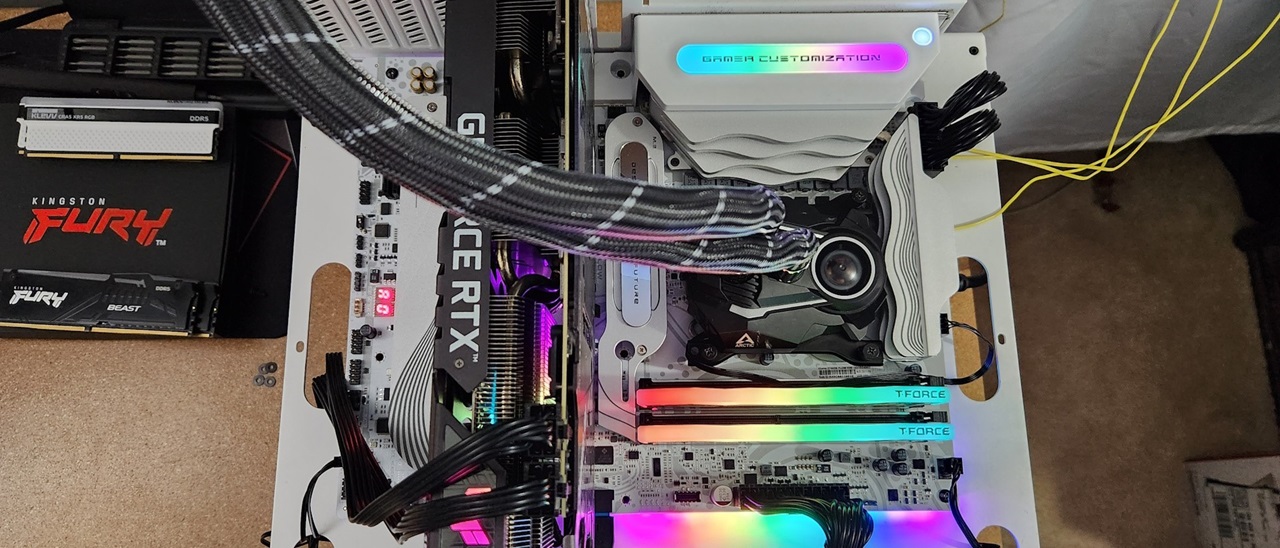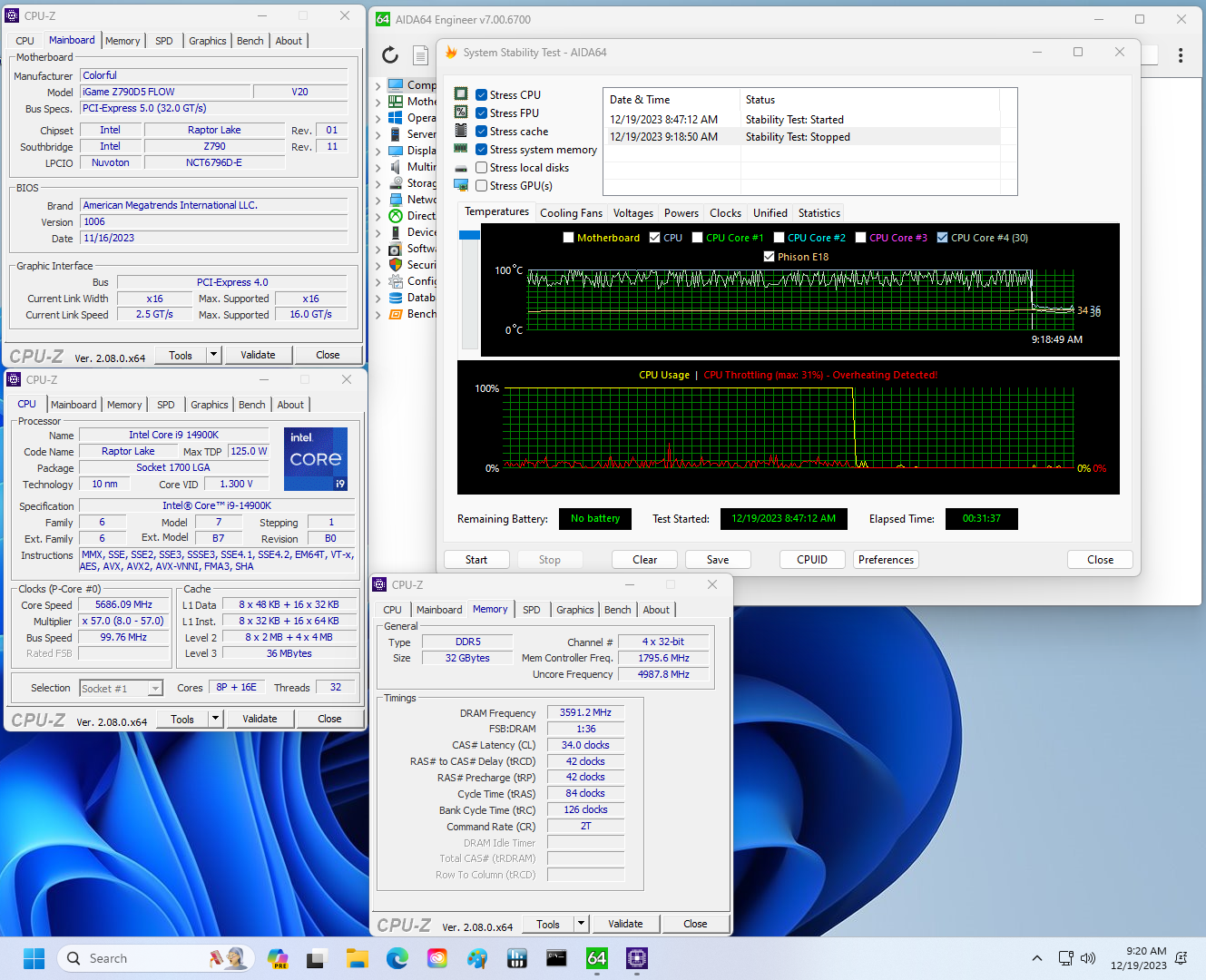Why you can trust Tom's Hardware
Our standard benchmarks and power tests are performed using the CPU’s stock frequencies (including any default boost/turbo) with all power-saving features enabled. We set optimized defaults in the BIOS and the memory by enabling the XMP profile. For this baseline testing, the Windows power scheme is set to Balanced (default) so the PC idles appropriately.
Synthetic Benchmarks
Synthetics provide a great way to determine how a board runs, as identical settings should produce similar performance results. Turbo boost wattage and advanced memory timings are places where motherboard makers can still optimize for stability or performance, though, and those settings can impact some testing.
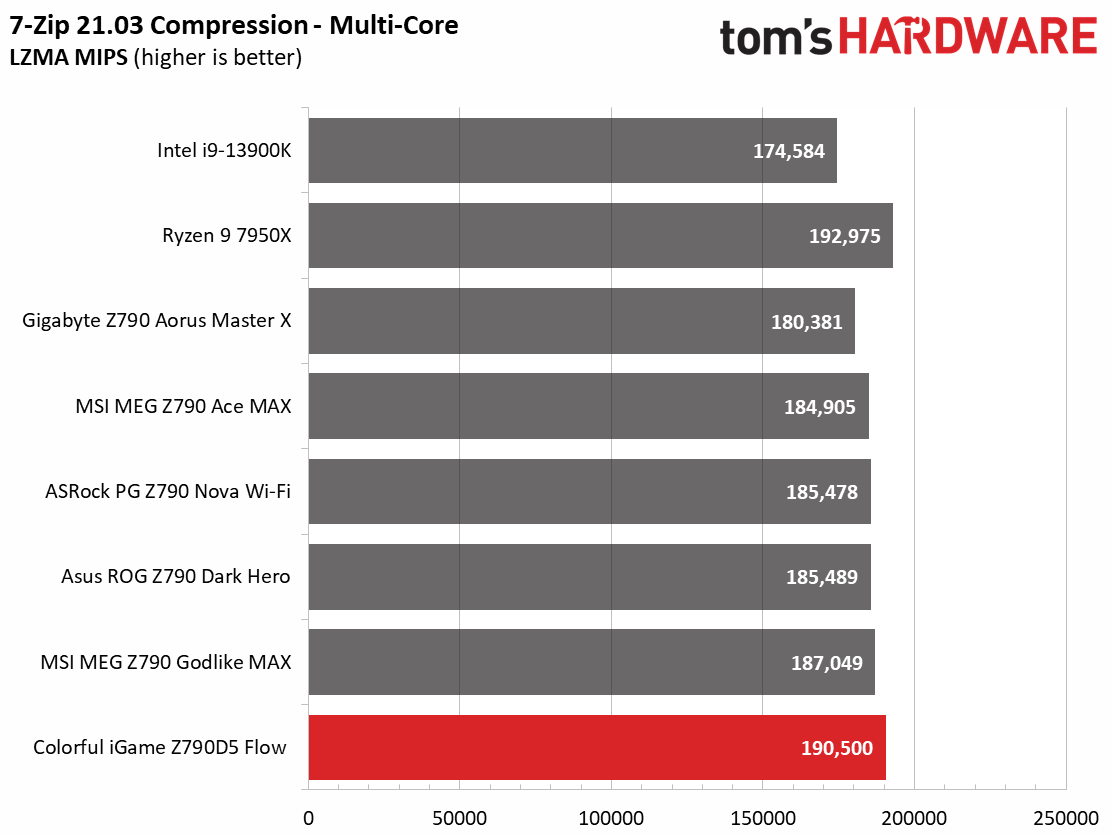
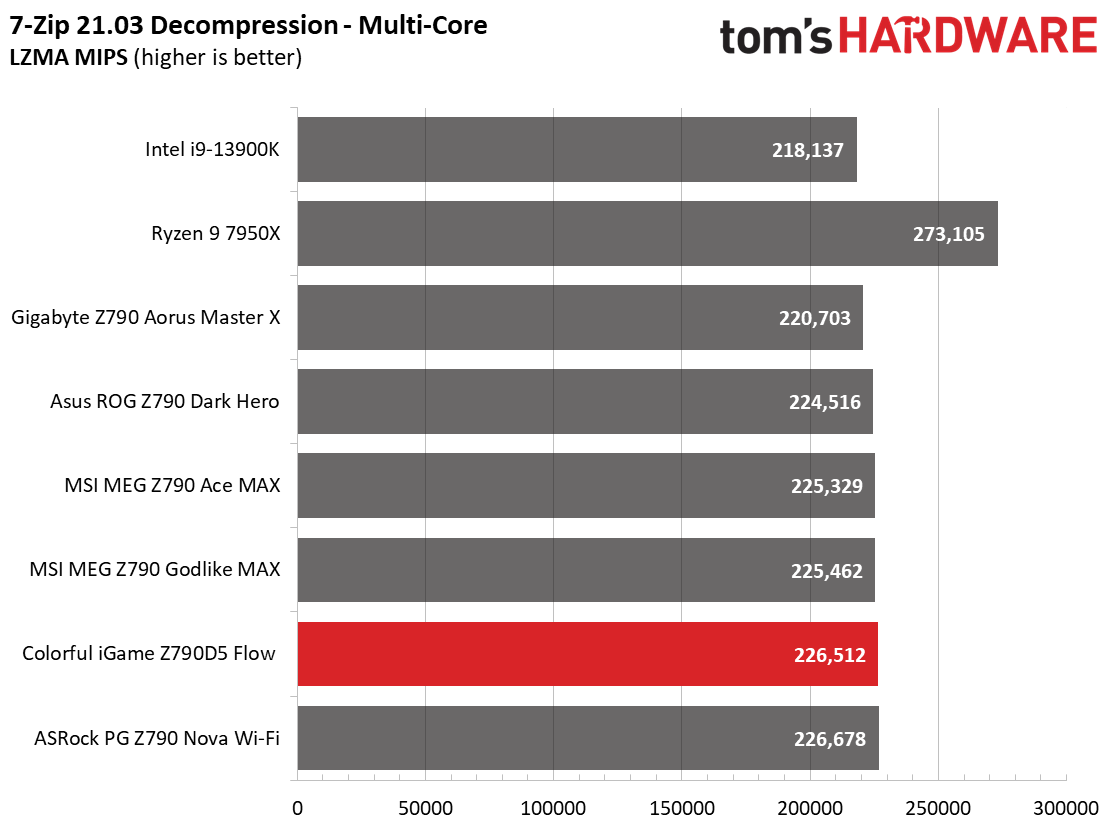
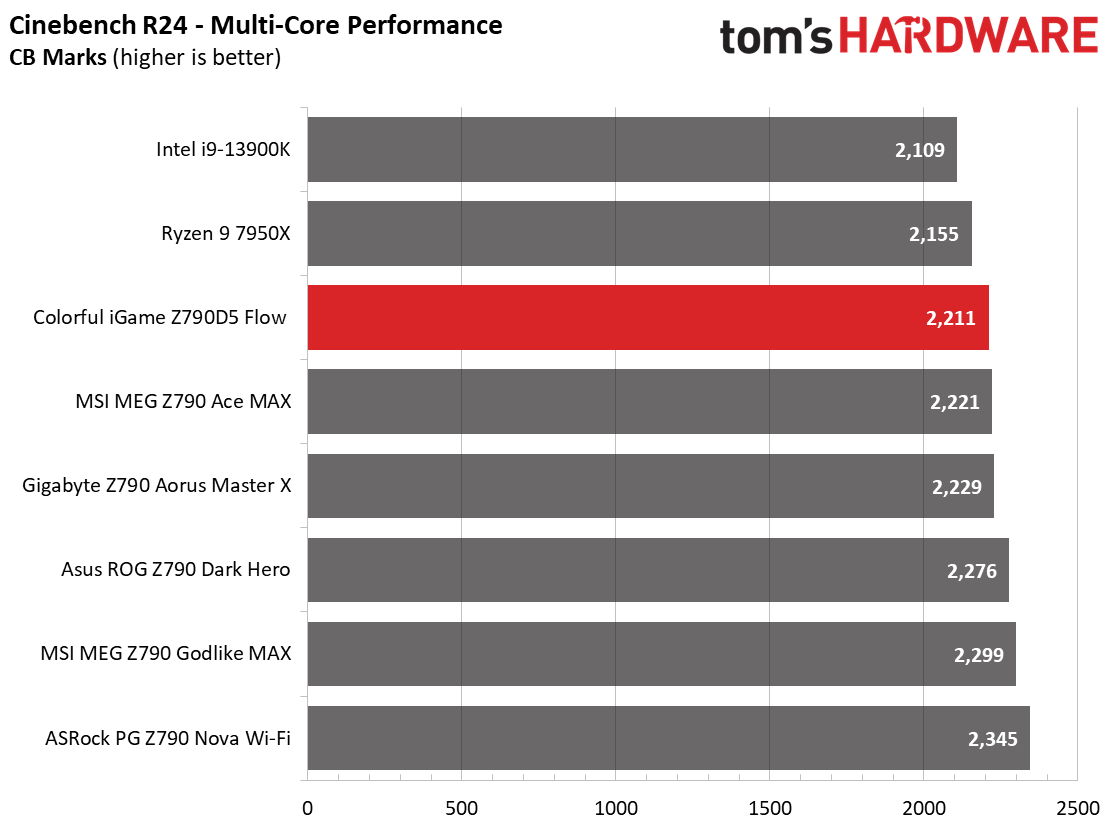

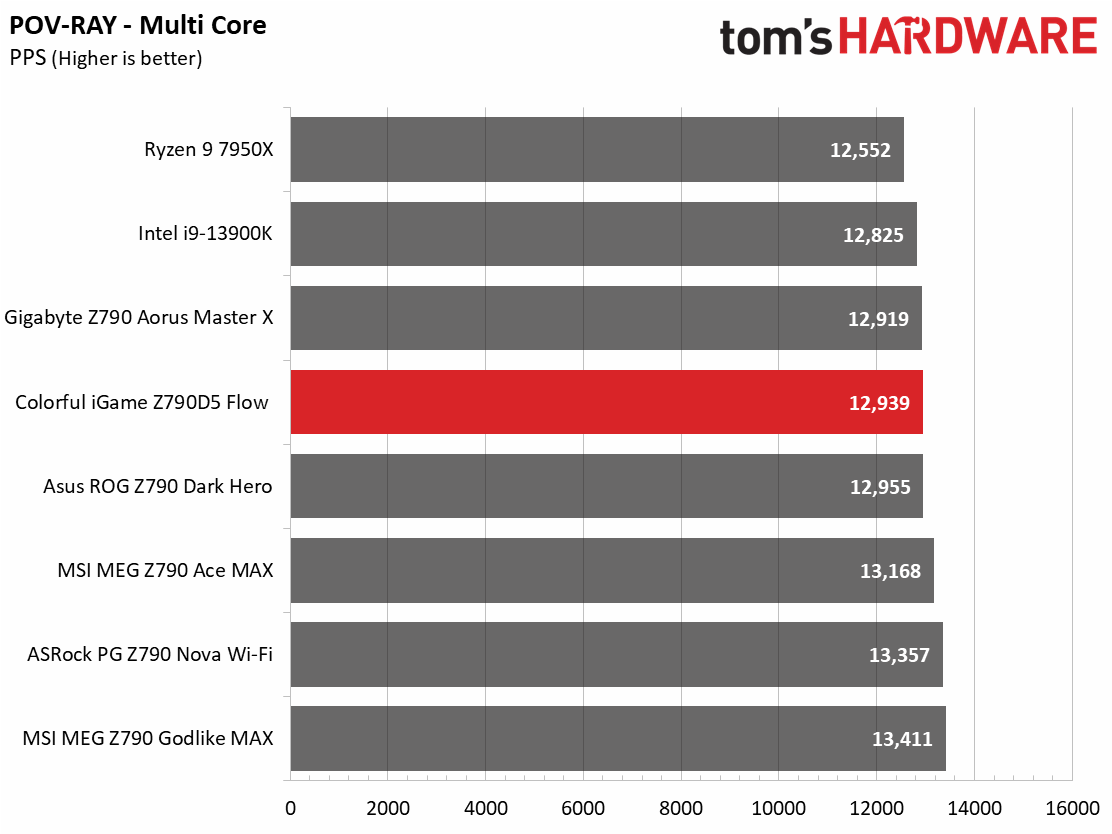
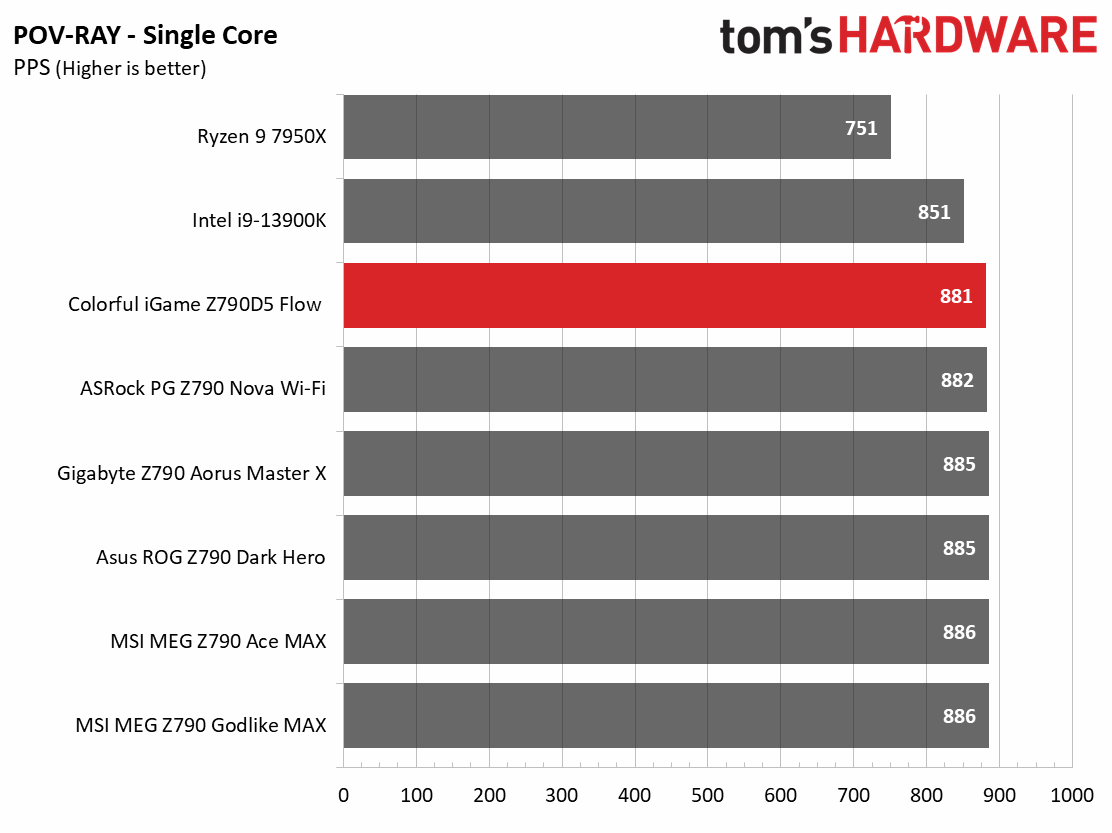
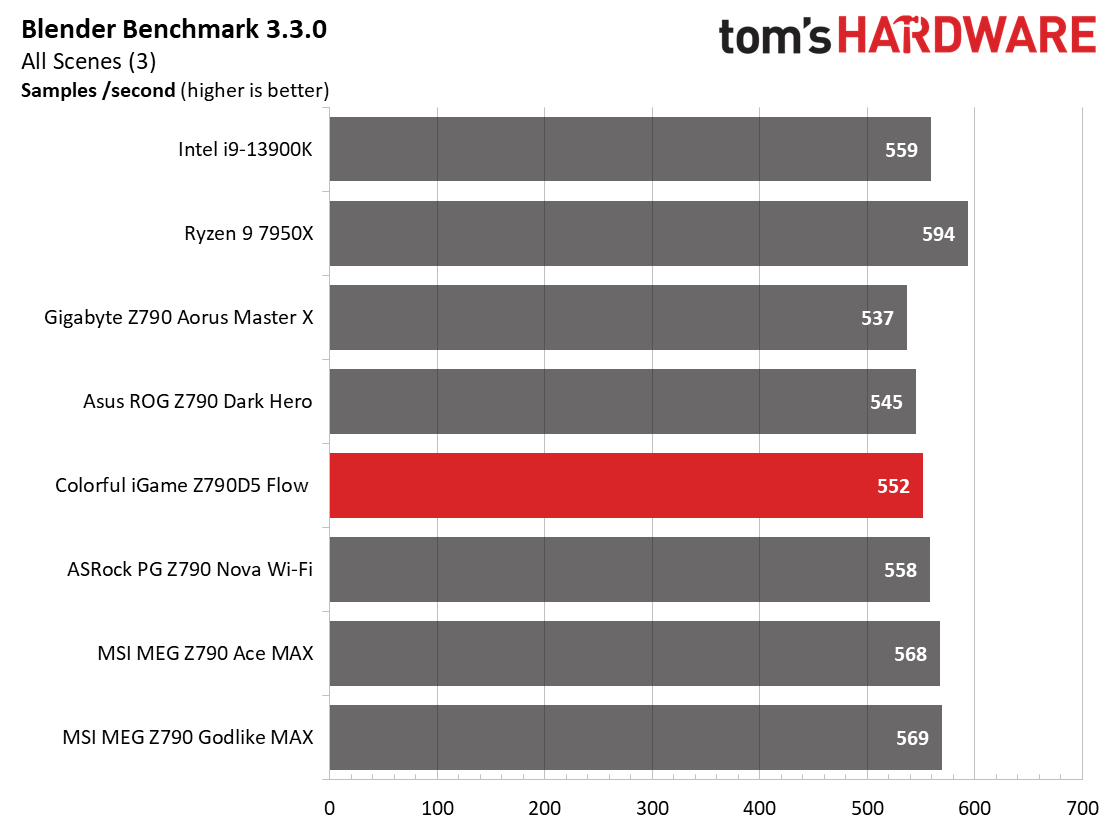
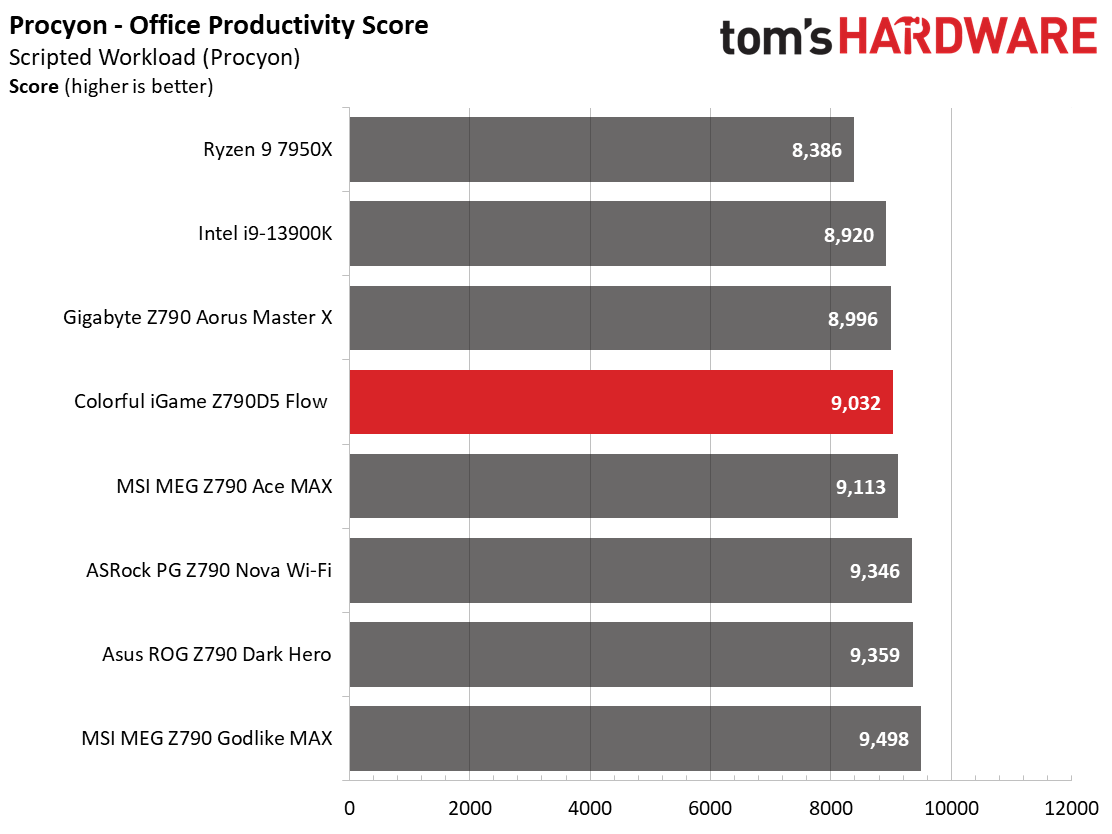
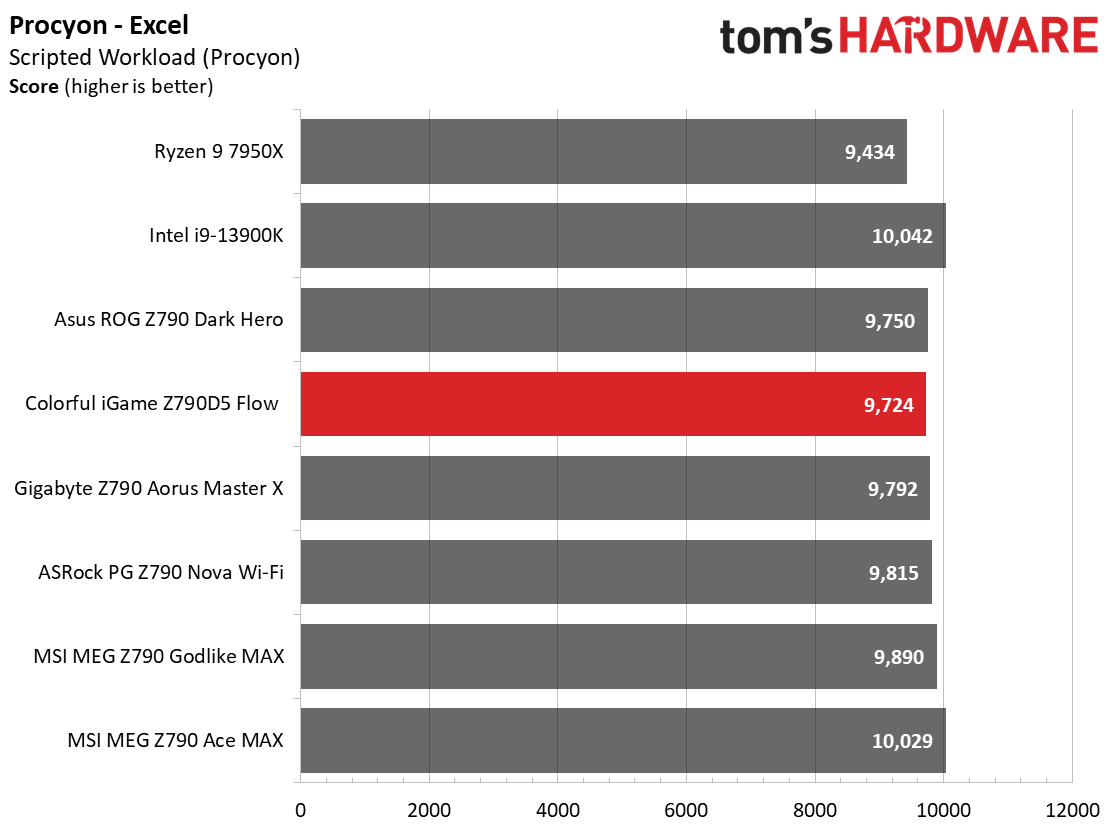
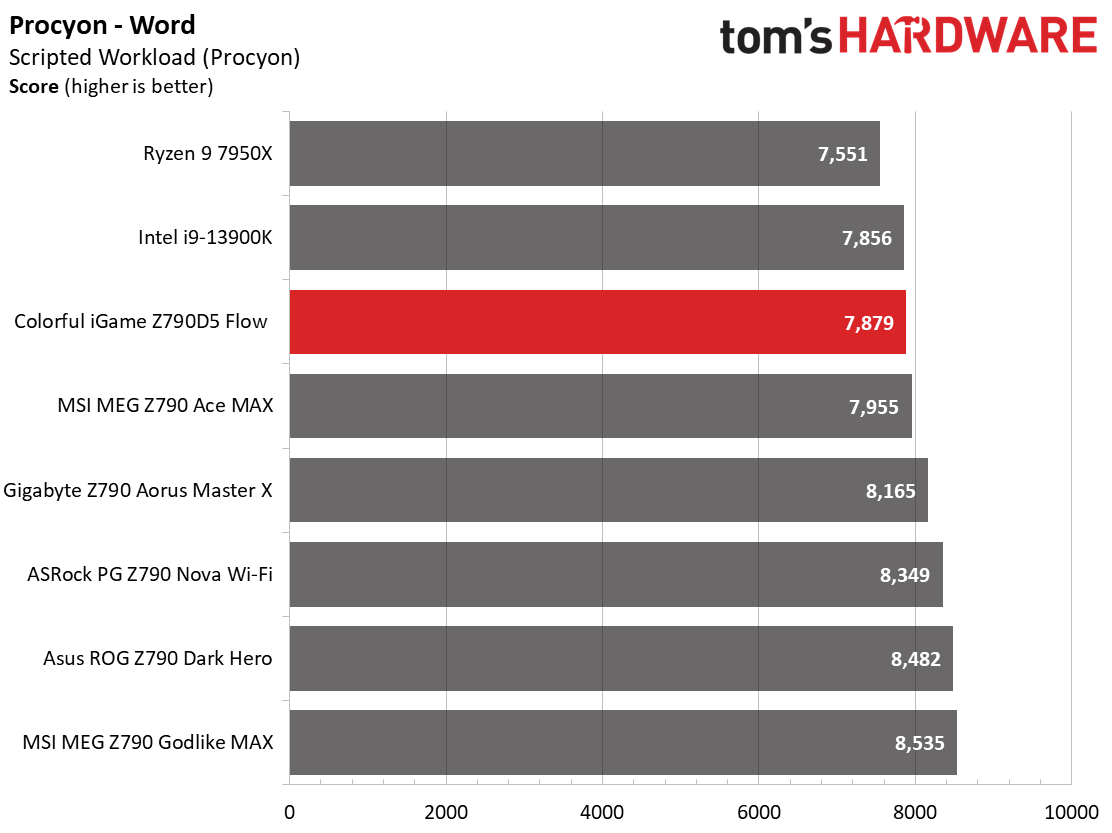
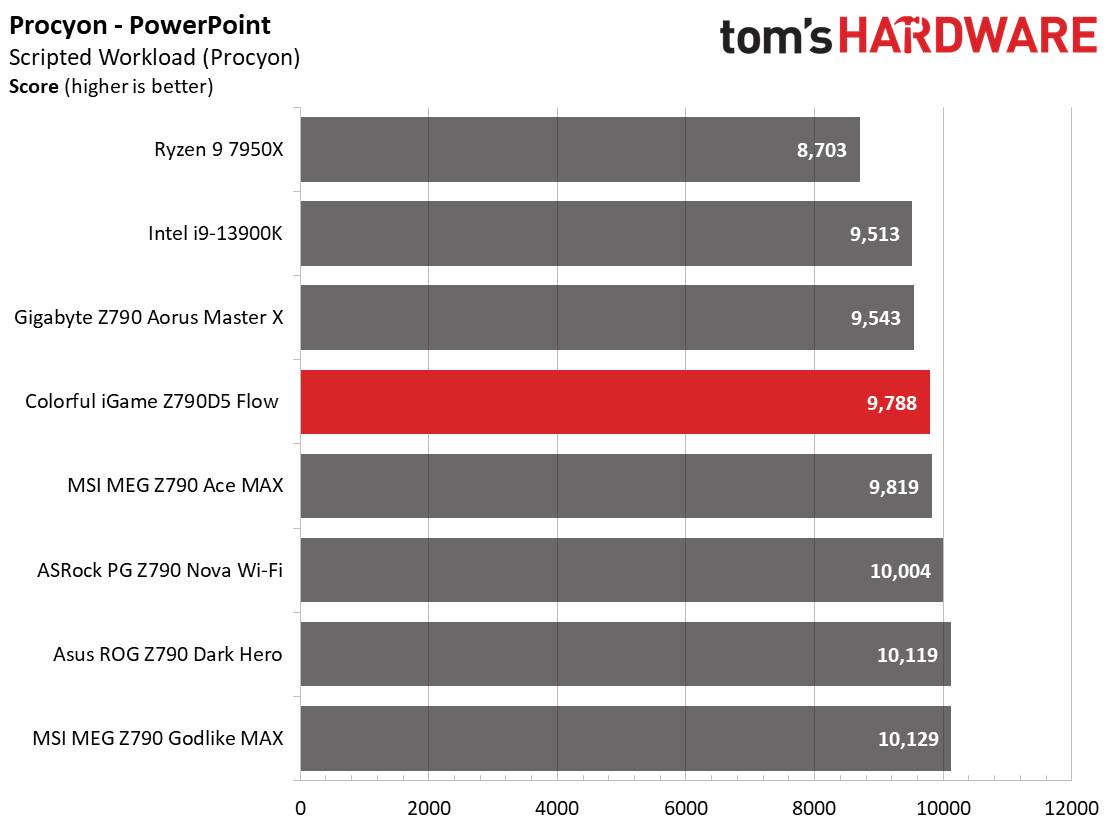

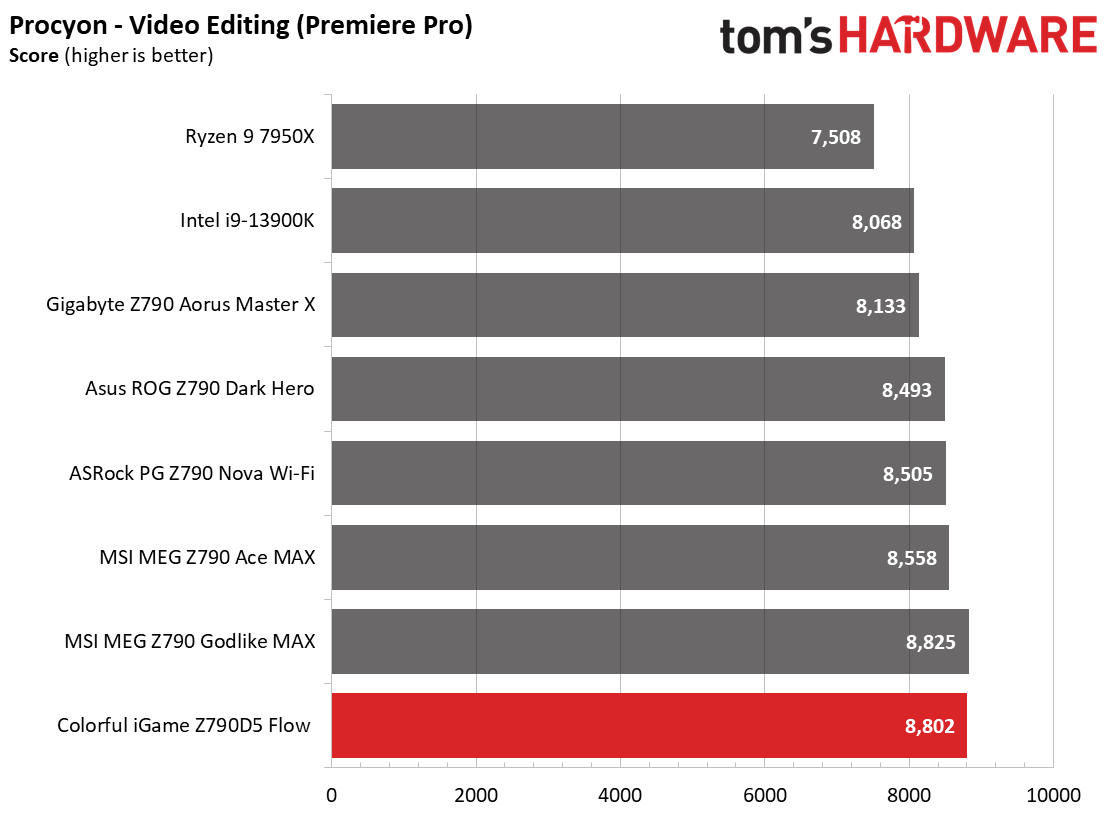
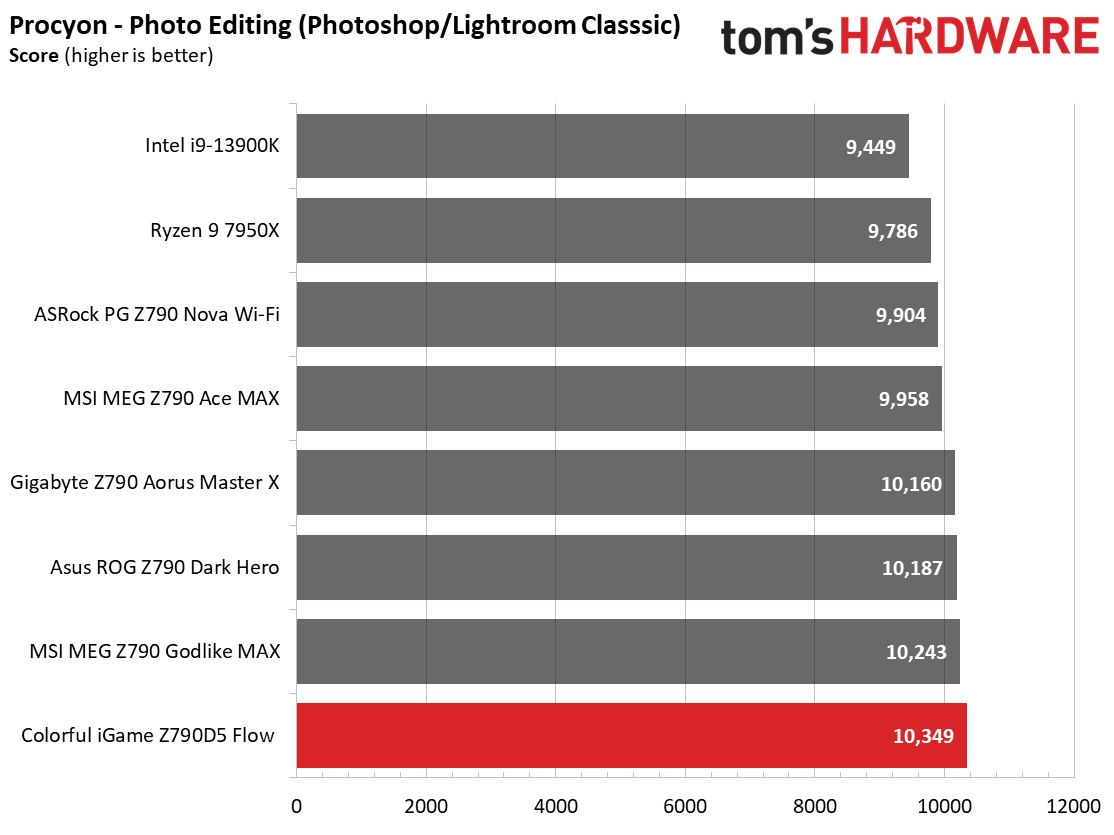
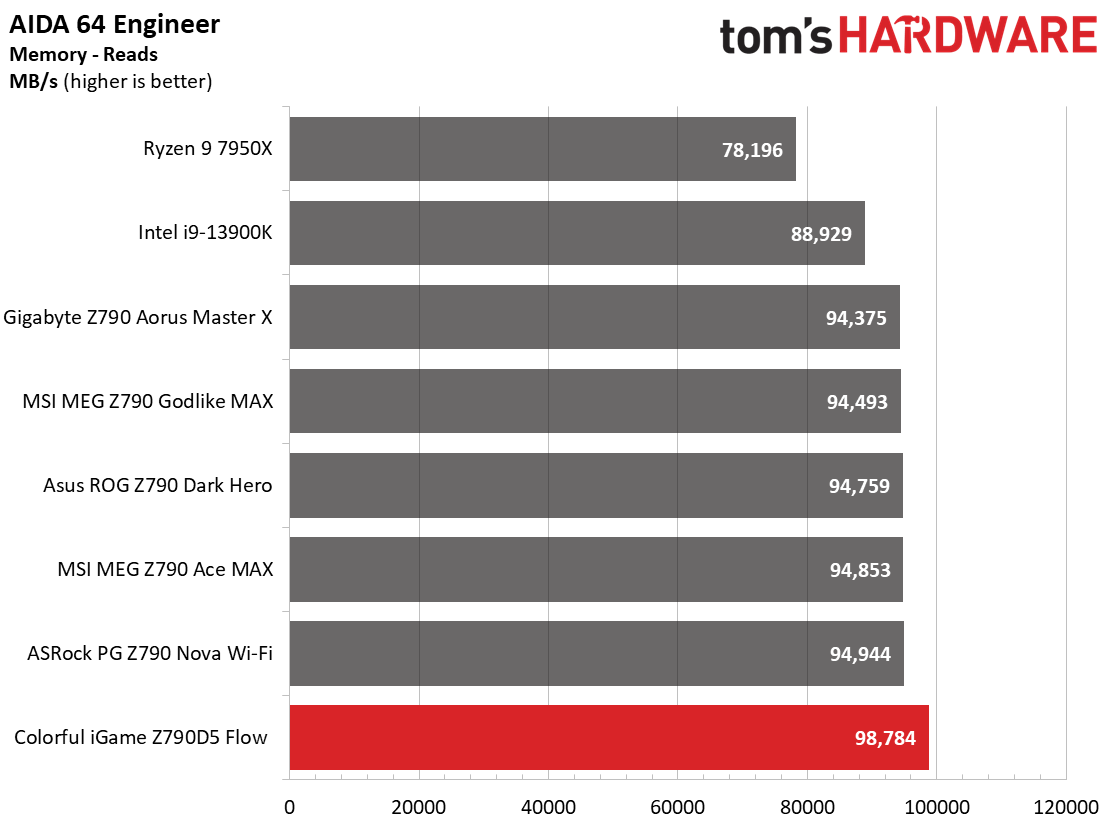

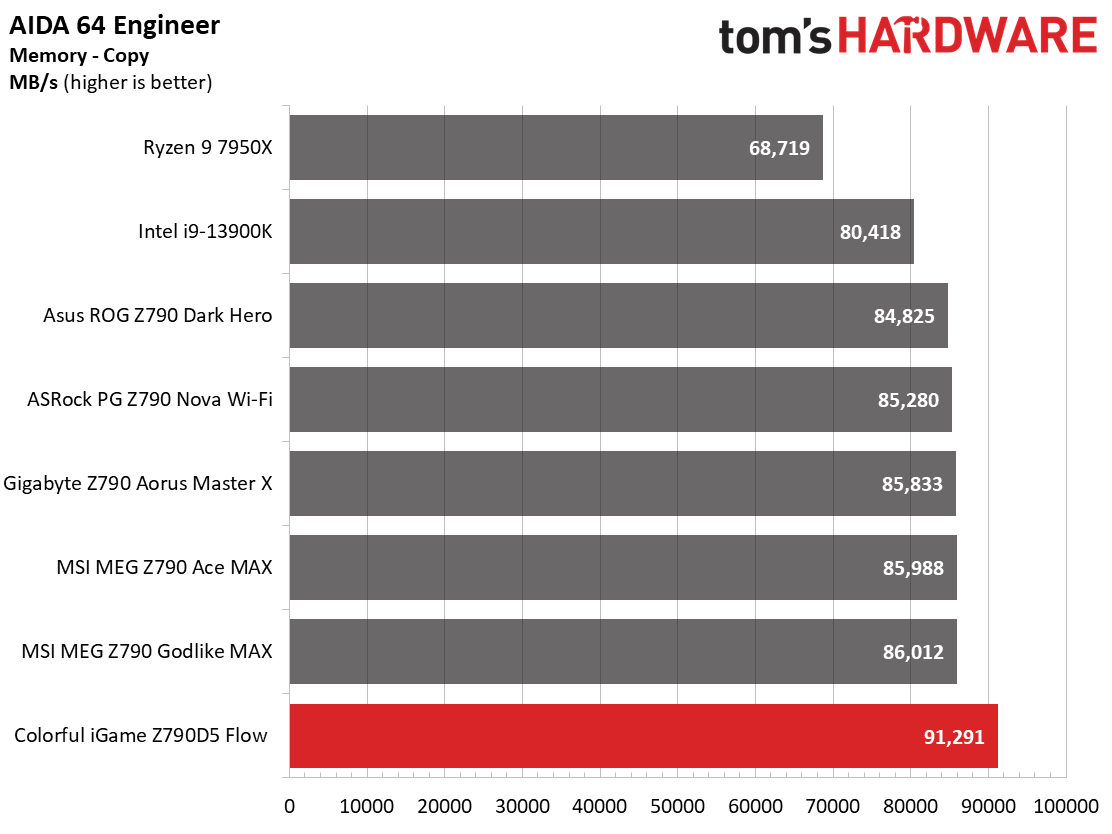

Overall performance in the synthetic benchmarks was solid, beating out much more expensive boards in some tests. The difference among our tested boards isn’t big, but the default BIOS settings and our high-quality AIO cooler allow the i9-14900K to stretch its legs. Remember, for any board configured this way, performance is limited by the CPU temperature and keeping it from throttling.
Timed Applications
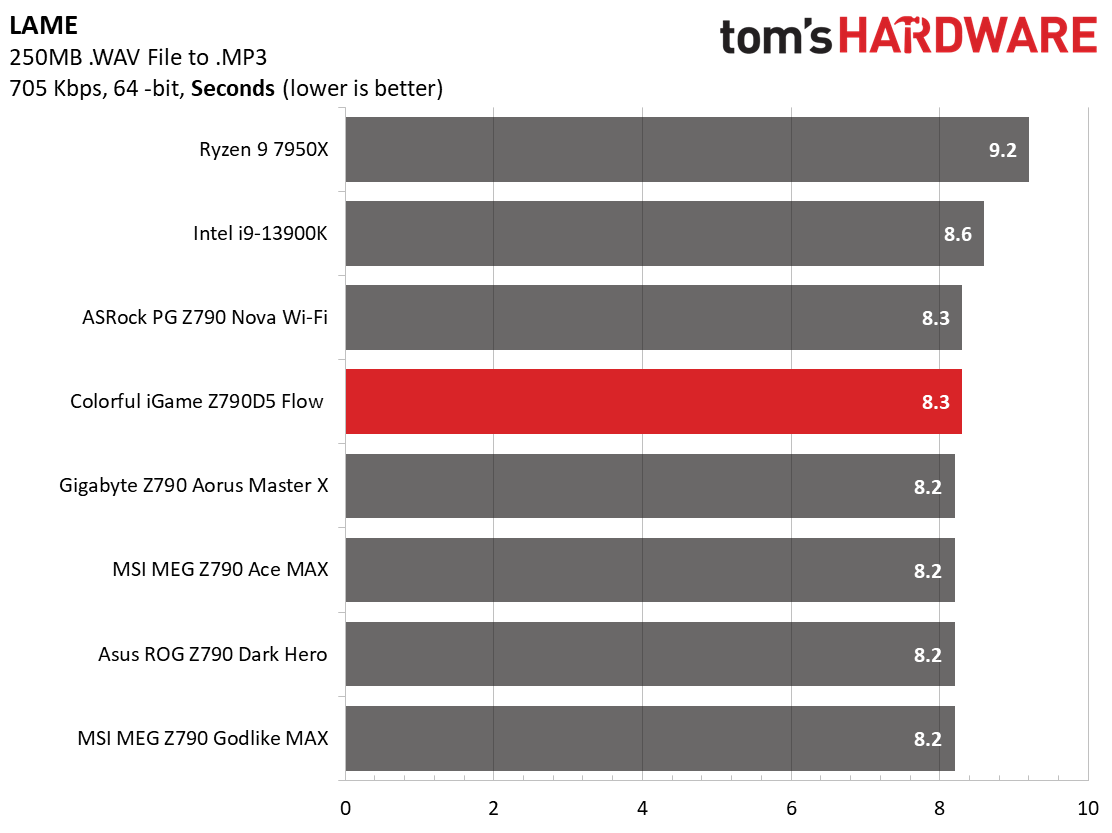
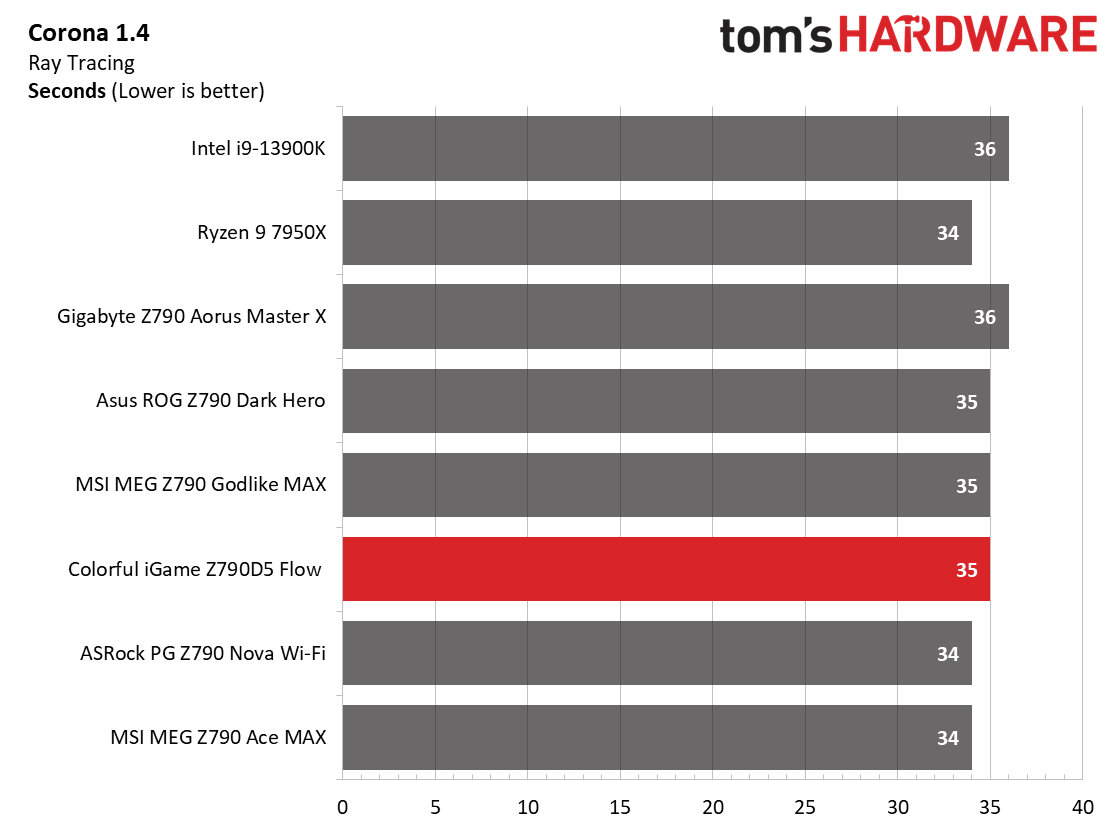
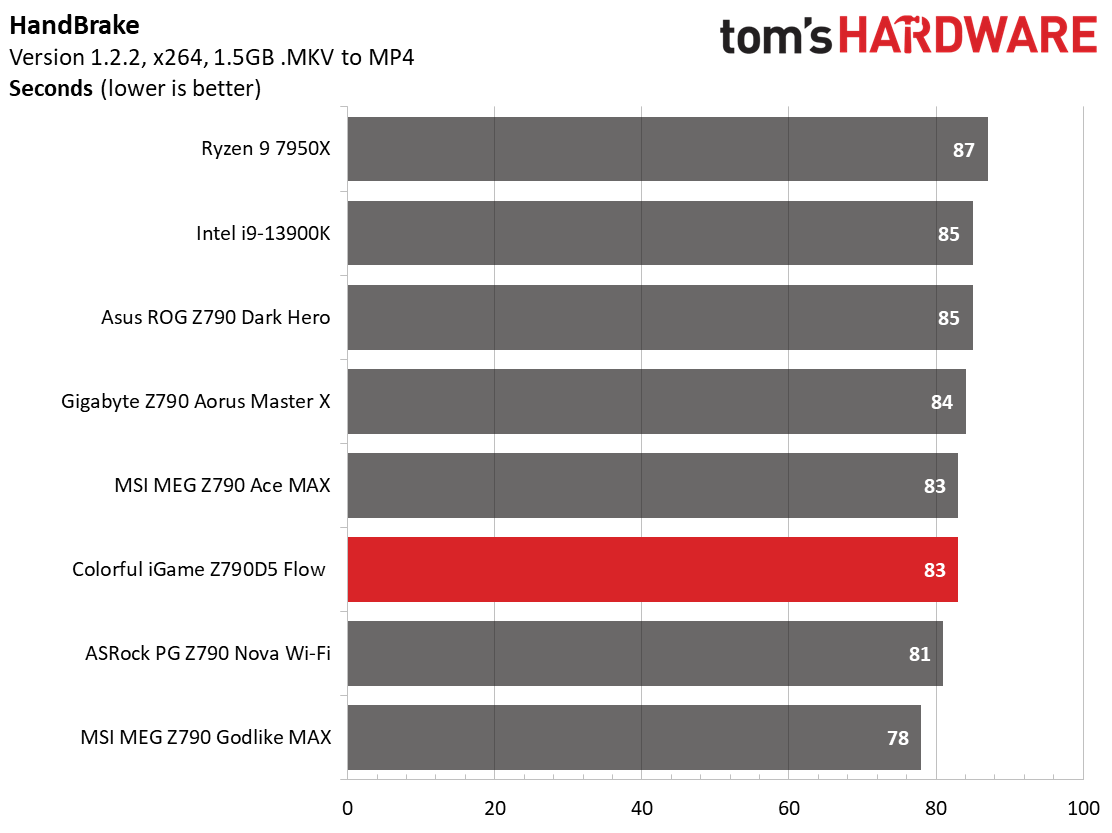

The Z790D5 Flow did well in our timed applications, too, running right around the average of our datasets so far. There is nothing to worry about here, either.
3D Games and 3DMark
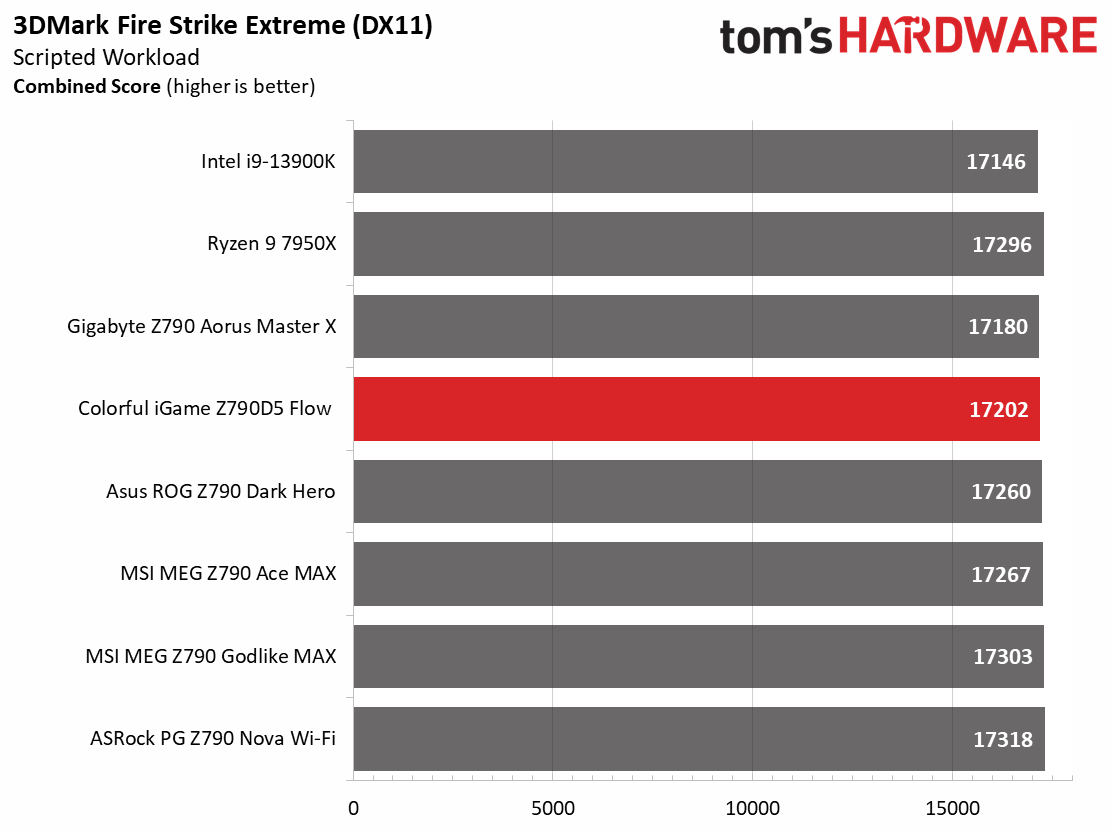
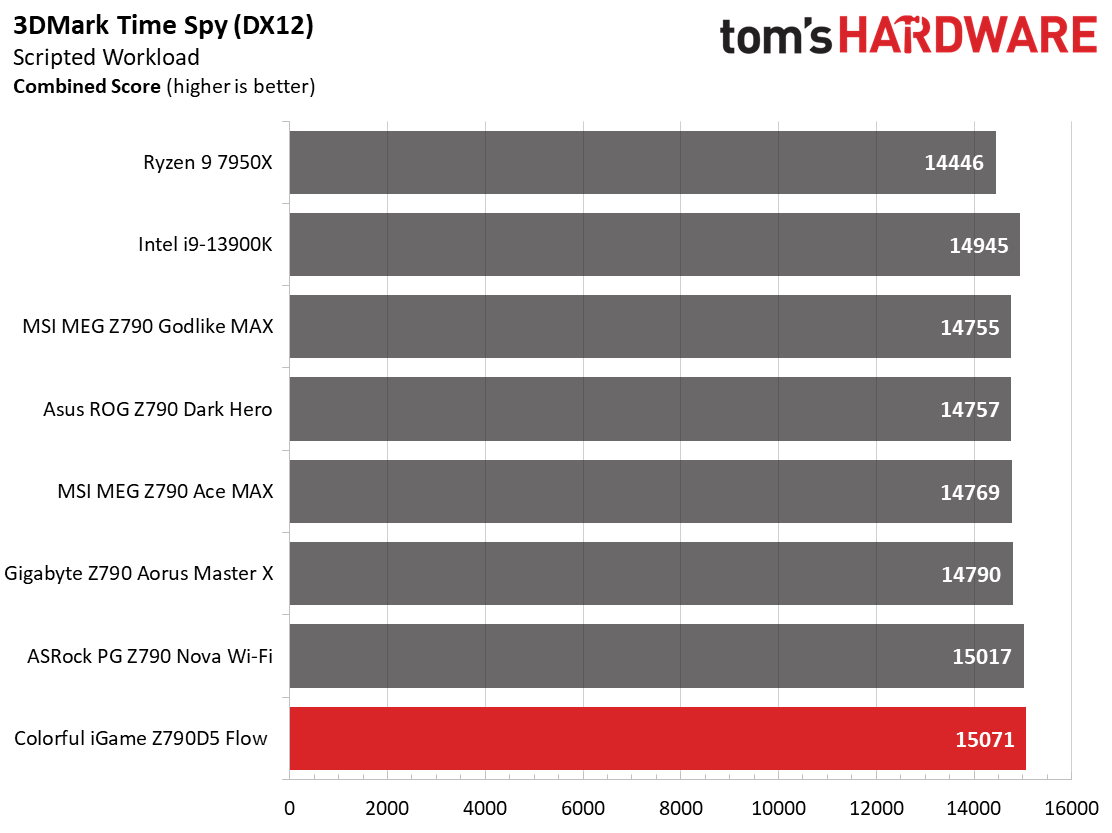


Starting with the launch of Zen 4, we shifted our test games from F1 21 to F1 22 while keeping Far Cry 6. We run the games at 1920x1080 resolution using the Ultra preset (details listed above). As the resolution goes up, the CPU tends to have less impact. The goal with these settings is to determine if there are differences in performance at the most commonly used (and CPU/system bound) resolution with settings most people use or strive for (Ultra). We expect the difference between boards in these tests to be minor, with most falling within the margin of error differences. We’ve also added a minimum FPS value, which can affect your gameplay and immersion experience.
The board also displayed solid results in our gaming test. Unless you’re counting frames, you’ll never know the difference between these boards.
Overclocking
Generation after generation, overclocking headroom has been shrinking with both Intel and AMD processors, with motherboard partners pushing the limits to set themselves apart from the plethora of options available to the consumer. With the overclocking headroom all but gone, we’ve left things at stock for cores but will push the Integrated Memory Controller (IMC) for faster RAM. Remember, for 14th-gen CPUs, the maximum stock spec for memory is DDR5-5600. We have a DDR5-7200 kit and a DDR5-8000 kit in-house to test the higher speeds.
Get Tom's Hardware's best news and in-depth reviews, straight to your inbox.
Using the latest BIOS when writing (1006 - from 11/16), our memory kits worked by simply enabling the XMP profile. The board is rated higher, and there are dozens and dozens of compatible kits on the QVL. If you want to go higher, you certainly can, but you get out of that sweet spot of performance versus cost fast.
Power Consumption / VRM Temperatures
We used AIDA64’s System Stability Test with Stress CPU, FPU, Cache, and Memory enabled for power testing, using the peak power consumption value. The wattage reading is from the wall via a Kill-A-Watt meter to capture the entire PC (minus the monitor). The only variable that changes is the motherboard; all other parts remain the same. Please note we moved to using only the stock power use/VRM temperature charts. Since the system uses every available degree Celsius, unless you’re using a sub-ambient cooling solution, you’ll use more power and generate more heat using default settings.
Idle power use on the Z790D5 flow was higher than average, at 74W. Load power draw was also the highest we’ve measured, peaking at 455W from the wall. During the stress test, the CPU itself consistently pulled over 300W (with some thermal throttling) throughout, showing off the lack of limits on the BIOS.

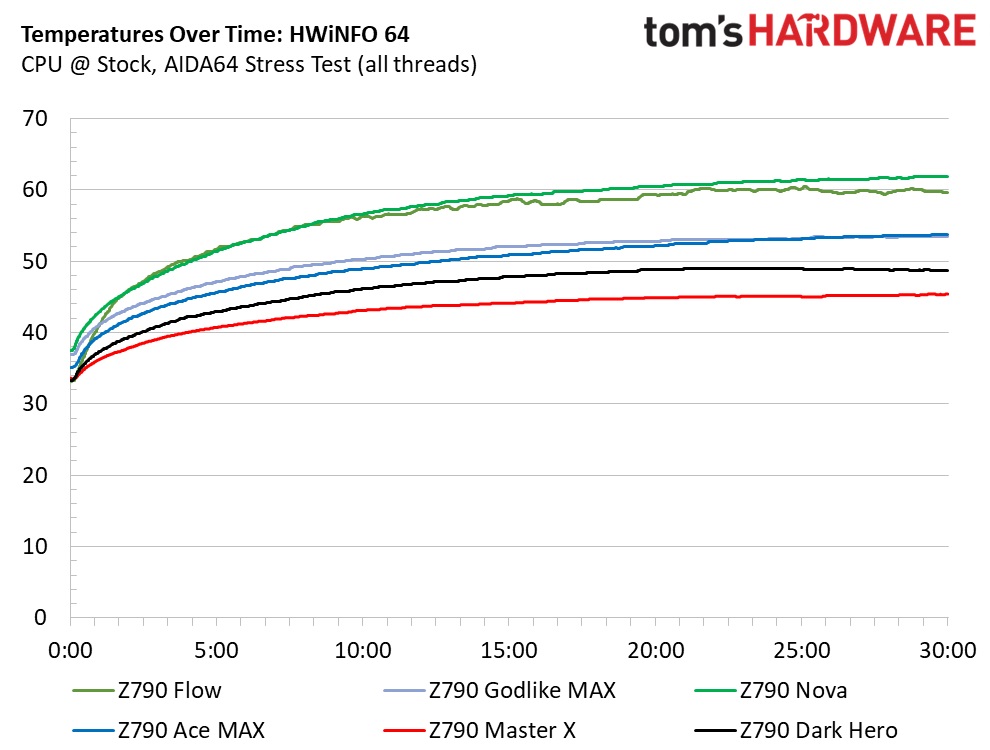
VRM temperatures were higher, peaking over 60 degrees Celcius in our testing. The MOSFETs and other power bits are rated well above that, so these are running within specification. The board won’t have issues maintaining heavy loads or overclocking with ambient cooling.
Bottom Line
Colorful’s iGame Z790D5 Flow is a solid mid-range motherboard from a lesser-known motherboard maker. For just under $390 (MSRP), you get a unique-looking motherboard that does away with sharp, Cybertruck-type lines we’re used to seeing on other boards. In addition to the shape of the heatsinks and shrouds, the white PCB also put it in rare company. But it’s not all about looks. You get capable power delivery, a last-gen flagship-class audio solution, ample storage options, above-average performance, and fast wired and wireless networking.
There’s a lot of competition just under $400 though, so the Flow has much to stand up to. Asus’ ROG Strix Z790-F Wi-Fi II ($429.99), the Gigabyte Z790 Aorus Pro X ($359.99), MSI’s MPG Z790 Edge Ti MAX ($389.99), and probably the best-equipped AND least expensive of the bunch, ASRock’s Z790 Tiachi Lite ($299.99) are all vying for your dollars. The most significant difference among the competitors is each has a PCIe 5.0 x4-capable M.2 socket and Wi-Fi 7. It is worth noting the Z790 boards listed above are ‘refresh’ boards. The original versions of these boards are less expensive and do not have Wi-Fi 7 or native 14th-gen support.
Overall, the iGame Z790D5 Flow stands out among the competitors because of its white theme and use of curved lines. Hardware-wise, it’s competent but lacks the latest and greatest, including a PCIe 5.0 M.2 socket. If you compare it to the similarly priced refresh boards, you also miss out on Wi-Fi 7. For some (and probably most), this isn’t a big deal as most don’t have the network ecosystem to support the attest Wi-Fi standard, and PCIe 5.0-based M.2 modules are still ramping up to mainstream use. The board’s unlocked power limits yield good performance in our tests in productivity and gaming scenarios, so you’ll get the most out of whatever processor you use so long as your cooling is up to the task. If you’re in the market for a white motherboard that stands out on looks, the Z790D5 Flow is viable, but the refreshed competition is enticing for the same amount of money.
MORE: Best Motherboards
MORE: How To Choose A Motherboard
MORE: All Motherboard Content

Joe Shields is a staff writer at Tom’s Hardware. He reviews motherboards and PC components.
